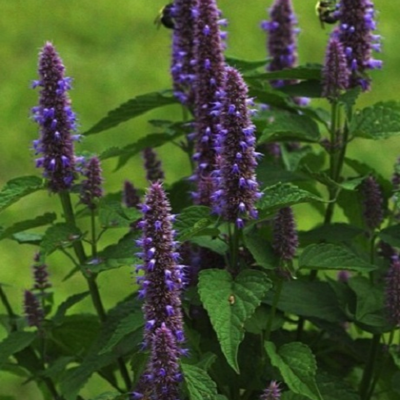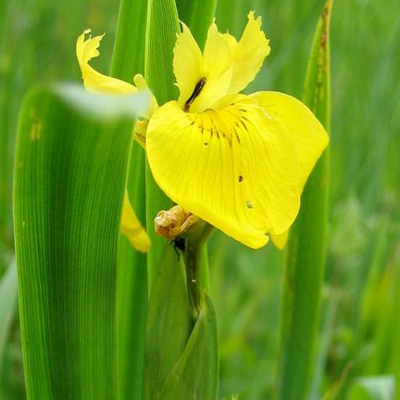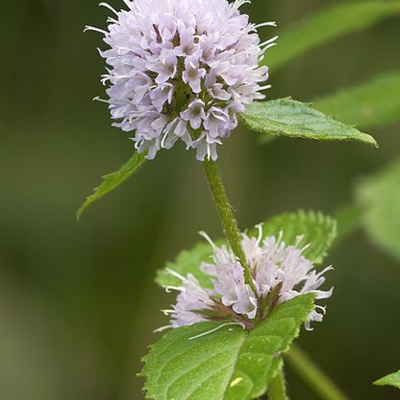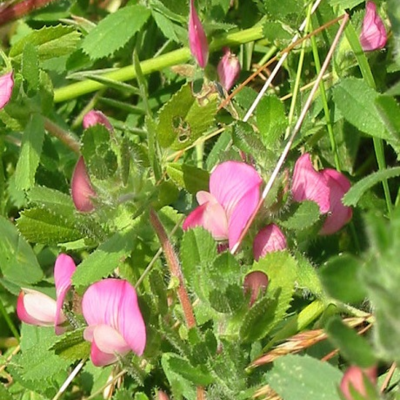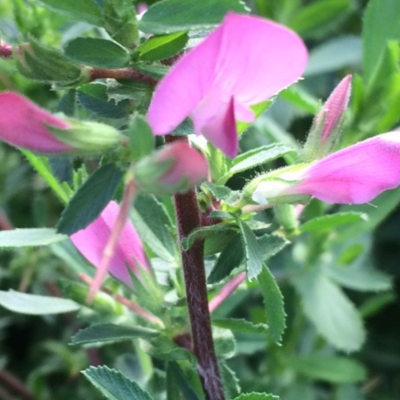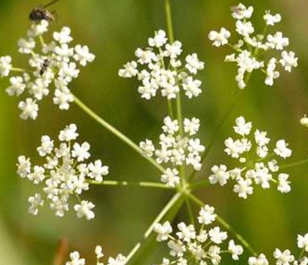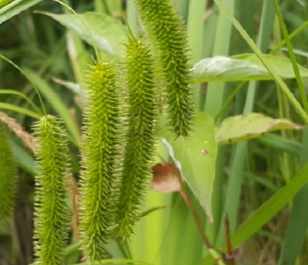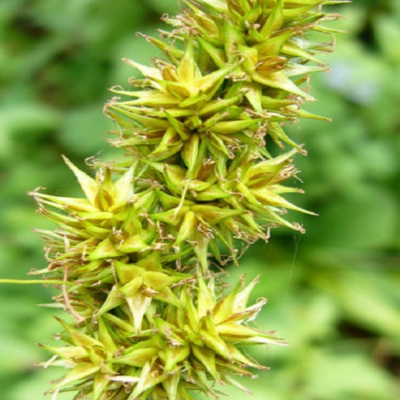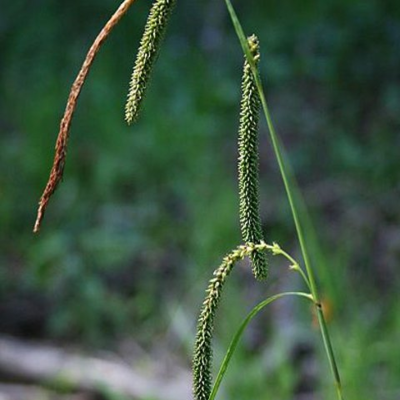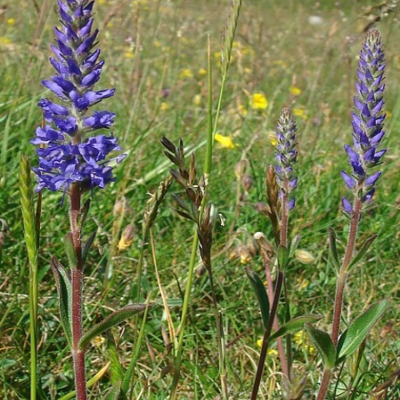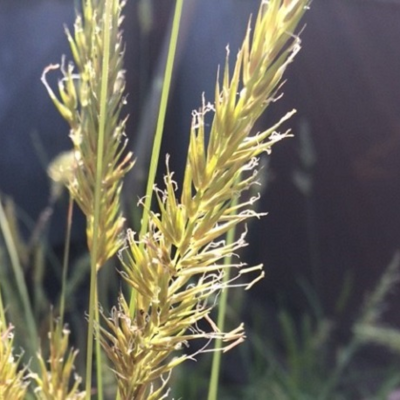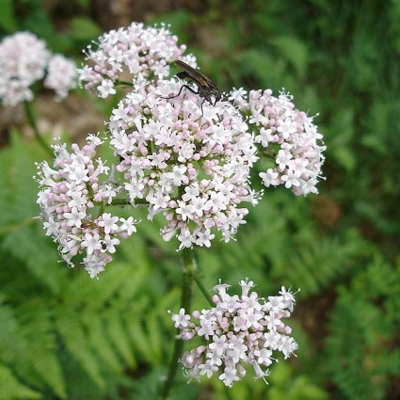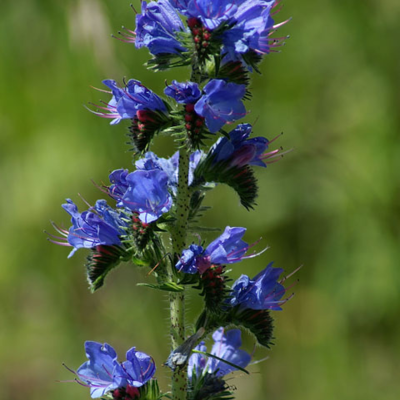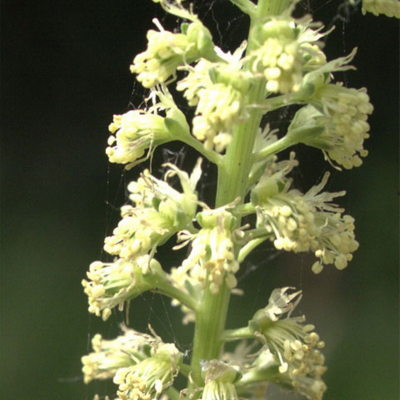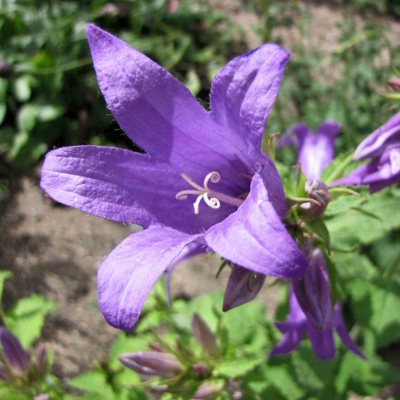Wildflower Plants A to Z
Choose from our entire range of over 100 wildflower plug plants, expertly grown in our very own nursery from high quality, UK native wildflower seed. Our wildflower plugs are ready to be planted straight out into your garden or meadow as soon as they arrive, all year round. Buying individual wildflower plants is one of the best ways to establish your chosen wildflower species, planted individually or as part of a more diverse meadow created from our range of wildflower seeds.
Don't hesitate to get in touch to speak to one of our experts or request a catalogue to view our full range. Ordering regularly or looking for large volumes? Click here to apply for a trade account today - we review all applications within one working day.
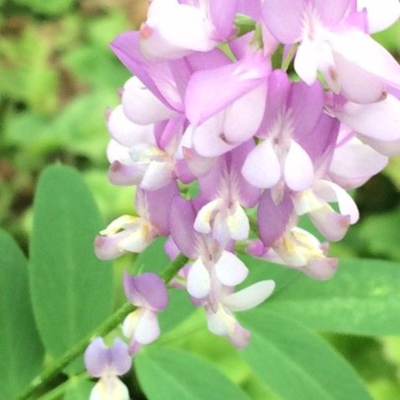

Plants for Pollinators highlights plants selected by the RHS as scientifically proven to tackle the declines in bees, butterflies and other pollinators.
Goat's Rue is a medium to tall plant with lilac-to-lavender petals in the shape of small sweetpeas. While it was previously grown readily as forage and medicinal crop, it's nowadays seen as an excellent ornamental plant that is attractive to a variety of insects as a food source.
- Type: Perennial
- Height: 100-150cm.
- Flowers: July to September
- Soil requirement: Moist but well-drained
- Light requirement: Full sun or partial shade
- Natural habitat: Damp meadows, river banks
- Also known as: French Lilac, Professor-Weed, Italian Finch
This item is currently unavailable
What’s better than the Anise Hyssop’s clumps-forming, soft spikes of mauve flowers? Perhaps only its aromatic leaves! A nectar-rich scented sensation of a herb best placed at the back of a border, where it brings in bees and butterflies.
- Type: Perennial
- Height: 60-100cm.
- Flowers: June-September
- Soil Requirement: Well-drained
- Light Requirement: Full sun or partial shade
- Natural Habitat: Dry forests, praries
- Also known as: Fragrant Giant Hyssop, Lavender Giant Hyssop
This item is currently unavailable
The Yellow Flag Iris is thought by some to be the original fleur-de-lis, a symbol of heraldry and royalty. And while the golden, three-petalled flowers and blade-like leaves are regal indeed, its true name is just as appropriate, as this water-resistant plant grows on tall, branching stems which display its beautiful blooms like flags waving in the wind. Recommended as a pond-side plant.
- Type: Perennial
- Height: 100-150cm.
- Flowers: May-August
- Soil Requirement: Moist
- Light Requirement: Full sun or partial shade
- Natural Habitat: Marsh, flood planes, ditches
- Also known as: Flagon, Water Flag, Yellow Fleur-De-Lis
This item is currently unavailable


Plants for Pollinators highlights plants selected by the RHS as scientifically proven to tackle the declines in bees, butterflies and other pollinators.
A robust marsh flower which produces tall plumes of magenta blooms. Perfect for the pondside- let them loose and enjoy these sensational spikes of colour as they bring in bees!
- Type: Perennial
- Height: 60-120cm.
- Flowers: June-September
- Soil Requirement: Moist
- Light Requirement: Full sun or partial shade
- Natural Habitat: Marshes, riverbanks, fens
- Also known as: Black Blood, Rainbow Weed, Red Sally
This item is currently unavailable
This is the perfect pond-side plant for those wanting a breath of fresh air! Produces globes of pale pink petals that are good for pollinators, and just as appealing are its aromatic leaves, which can even be used as a flavouring. Needless to say, this is one cool flower.
- Type: Perennial
- Height: 60-80cm.
- Flowers: July-October
- Soil Requirement: Moist
- Light Requirement: Full sun or partial shade
- Natural Habitat: Wet meadows, marshes, river banks
- Also known as: Fish Mint
This item is currently unavailable


Plants for Pollinators highlights plants selected by the RHS as scientifically proven to tackle the declines in bees, butterflies and other pollinators.
The Great Mullein bears tall spires of soft, silvery leaves which spiral around the stem. In fact, this plant’s super-soft, hairy texture is just as well-known as the dense clusters of miniature pale-gold flowers it produces. Throughout history this plant’s seen a variety of uses, and in the garden it benefits bees and butterflies greatly, with some species of bees using its silvery ‘hair’ to build their homes. A friendly flower which helps the wildlife and adds a uniquely bright splash of colour to the backs of borders.
- Type: Biennial
- Height: 100-180cm.
- Flowers: July-September
- Soil Requirement: Well-drained
- Light Requirement: Full sun
- Natural Habitat: Woodland margins, clearings, waste grounds
- Also known as: Aaron’s Rod, Feltwort, Velvet Plant
This item is currently unavailable
A creeping perennial which produces pink and white, pea-like petals, with equally-appealing and hardy hairy foliage with toothed leaves. An ideal meadow plant which prefers sandy soil and blooms in late summer, which also attracts bees and butterflies.
- Type: Perennial
- Height: 30-60cm.
- Flowers: July-September
- Soil Requirement: Well-drained
- Light Requirement: Full sun
- Natural Habitat: Grassland, coastal areas
- Also known as: Cammock, Land Whin, Stay-Plough
This item is currently unavailable
A shrub-like perennial that's usually found in infertile meadows and grasslands that compliments other species such as Vetch, Betony and Knapweed. Bold, red-pink, delicate flowers on erect, spiny stems.
- Type: Perennial
- Height: 40-50cm
- Flowers: July-September
- Soil requirement: Natural-acidic
- Light requirement: Full sun or partial shade
- Natural habitat: Grassland, meadows, roadsides
- Also known as: Women's War, Plough Tail
This item is currently unavailable
For those looking for something truly unique, the Burnet Saxifrage is one in a million: bearing thin branches of miniature, crystal-white floral umbels like snowflakes, as well as highly variable foliage, ranging from thin and sharp to short and toothed. It’s easy to naturalise, and its simple colouration makes it a suitable addition to any arrangement.
- Type: Perennial
- Height: 50–100cm.
- Flowers: May-September
- Soil Requirement: Moist but well-drained
- Light Requirement: Sun or partial shade
- Natural Habitat: Grassland, heathland
- Also known as: Lesser Burnet
This item is currently unavailable
The Cyperus Sedge produces drooping, yellow-green tufted flowers, which are well-suited for pond margins for those who want a super lush and lively look. Hardy and tall-growing, the blade-like leaves of this sedge provide important cover for waterside wildlife.
- Type: Perennial
- Height: 60-90cm.
- Flowers: May-June
- Soil Requirement: Moist
- Light Requirement: Full sun or partial shade
- Natural Habitat: Marshes, river banks, ditches
- Also known as: Sedge Hop
This item is currently unavailable
Perhaps named for its spiky, orange-and-bronze tinted flower heads, there’s no mistaking the sedge’s characteristic fresh green tint and long, slender leaves. Best planted in heavy soil or slightly submerged in water to create a vibrant display at the water’s edge and benefit the wildlife.
- Type: Perennial
- Height: 60-90cm.
- Flowers: June-July
- Soil Requirement: Moist
- Light Requirement: Full sun or partial shade
- Natural Habitat: Marshes, river banks, ditches
This item is currently unavailable
The Pendulous Sedge is a popular pond-side plant, and for a good reason- its nodding, tufted heads of grassy-green and golden-brown flowers really complete the mood of a marshy meadow, and are attractive to wildlife as well! One of the tallest species of sedge, this boisterous and hardy plant will self-seed readily.
- Type: Perennial
- Height: 100-140cm.
- Flowers: May-June
- Soil Requirement: Moist
- Light Requirement: Partial shade
- Natural Habitat: Marshes, river banks, wet woodlands
- Also known as: Great Pendulous Sedge
This item is currently unavailable
Produces dense spikes of miniature florets in regal blues and violets, alongside long, sharp leaves with a subtle silver tint. The sky’s the limit with these showy summer wildflowers: recommended for rockeries and brilliant in borders, this is a versatile and low-maintenance flower that’s practically made for a cottage garden.
- Type: Perennial
- Height: 30-60cm.
- Flowers: July-September
- Soil Requirement: Well-drained
- Light Requirement: Full sun
- Natural Habitat: Calcareous rocks and soils, grasslands
This item is currently unavailable
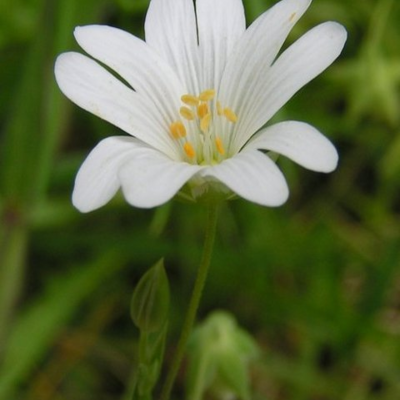

Plants for Pollinators highlights plants selected by the RHS as scientifically proven to tackle the declines in bees, butterflies and other pollinators.
These dainty white springtime flowers are known by a variety of names: one of the most prevalent is ‘Snapdragon’, referring both to its brittle stems and how you may hear its seed pods make a popping sound as they ripen in late Spring. These silvery starbursts are also perfect for pollinators!
- Type: Perennial
- Height: 25-60cm.
- Flowers: April-June
- Soil Requirement: Moist
- Light Requirement: Partial shade
- Natural Habitat: Hedges, banks, wood margins
- Also known as: All-Bone, Easter Bells, Moonflower, Snapdragon
This item is currently unavailable
These early-flowering, light maroon spikelets are wonderfully versatile, and are popular picks for fields and as potted plants for a variety of reasons: as its name suggests, Sweet Vernal-Grass has a sweet, almost vanilla-like taste to it when chewed, alongside its distinct aroma of cut hay. A valuable food plant for brown and skipper butterflies larvae.
- Type: Perennial
- Height: 30-60cm.
- Flowers: April-July
- Soil requirement: Well-drained
- Light requirement: Full sun
- Natural habitat: Wildflower meadows, margins
- Also known as: Vernal Grass, Spring Grass
This item is currently unavailable
Standing proud on tall, grey-green stems, Common Valerian can grow up to an astonishing 1.5m with delicate white-pink flowers atop. It has also been known to be used as a medicinal herb to help promote sleep.
- Type: Perennial
- Height: 15-75cm.
- Flowers: June-August
- Soil Requirement: Damp
- Light Requirement: Full Sun, Light Shade
- Natural Habitat: Woodland clearings and ditches
- Also known as: Garden Valerian, White Valerian, Garden Heliotrope, Setwall and All-Heal
This item is currently unavailable
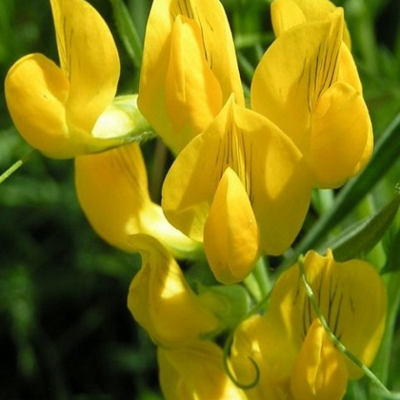

Plants for Pollinators highlights plants selected by the RHS as scientifically proven to tackle the declines in bees, butterflies and other pollinators.
A hardy scrambling wildflower whose bright buttery-yellow, pea-like blooms are well-contrasted by its black ripe seed pods. A magnificent meadow addition which benefits bees and butterflies, and adds a certain shine to shady spots.
- Type: Perennial
- Height: 50-100cm.
- Flowers: May-August
- Soil Requirement: Well-drained
- Light Requirement: Full sun or partial shade
- Natural Habitat: Grassland, roadside verges, waste ground
- Also known as: Angle Berries, Lady’s Fingers, Meadow Pea
This item is currently unavailable

Plants for Pollinators highlights plants selected by the RHS as scientifically proven to tackle the declines in bees, butterflies and other pollinators.
This winding wildflower boasts a long, speckled stem with thin leaves, and striking spikes of sapphire flower heads bearing red, tongue-like stamens. Don't be rattled by its slightly thorny exterior- Viper's Bugloss is a lot more beauty than bite, making for a charming plant for borders, and it benefits pollinators, too!
- Type: Biennial
- Height: 25–75cm.
- Flowers: June-September
- Soil Requirement: Well-drained
- Light Requirement: Full sun
- Natural Habitat: Grassland, coastal, heathland
- Also known as: Blue Devil, Cat’s Tail, Snake Flower
This item is currently unavailable
Much like the wild mignonette, this tall and robust spire of fresh-looking, yellow-green petals adds a vibrant energy to a wild meadow as its verdant, branching stems of narrow leaves shoot up to the sky! Perfect for pollinators, and its colours can help bring nature back to a struggling spot as it tolerates poor soil.
- Type: Biennial
- Height: 100-150cm.
- Flowers: May-October
- Soil Requirement: Well-drained
- Light Requirement: Full sun
- Natural Habitat: Waste ground, roadsides, quarries.
- Also known as: Dyer’s Rocket, Dutch Pink, Jerusalem Ash
This item is currently unavailable
This large species of bellflower produces petals in purple and periwinkle blue. Ideal for woodland gardens and lighting up shady spots, it’s hardy and easy to naturalise!
- Type: Perennial
- Height: 90–150cm.
- Flowers: June-September
- Soil Requirement: Well-drained
- Light Requirement: Partial to full shade
- Natural Habitat: Woodlands, hedge banks
- Also known as: Brantwood, Large Campanula
This item is currently unavailable
What’s better than spikes of snapdragon-like wildflowers? This particular plant specimen’s vivid violet colouration add a rich and regal splash of colour in beds, borders and gravel gardens, as well as being beneficial for bees and being super easy to naturalise.
- Type: Perennial
- Height: 22-60cm.
- Flowers: June-October
- Soil Requirement: Well-drained, sandy
- Light Requirement: Full sun
- Natural Habitat: Waste ground, rocky soil
This item is currently unavailable
Choosing different wildflower plants by species gives you complete control over when you plant them, where you plant them and what the end result will be. And buying wildflower plug plants instead of seeds, means that you don't have to wait for them to germinate - perfect if speed is of the essence!
The full range of over 100 British wildflower plants species from Boston Seeds is available to buy online in trays of 25, 150 and 500 plug plants and all are available with nationwide delivery.
Want to learn more about the likes and dislikes of your favourite wildflower plants? Our handy wildflower species quide will tell you all you need to know - yours to download and keep for FREE.
Buy With Confidence



